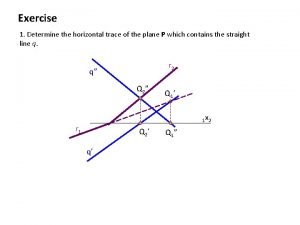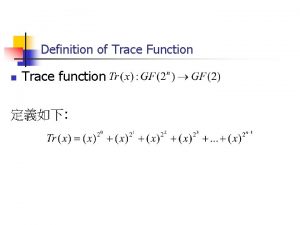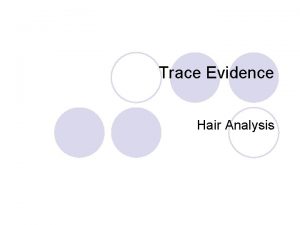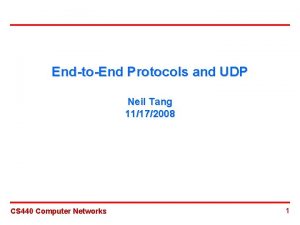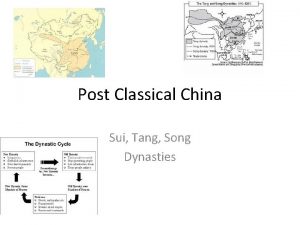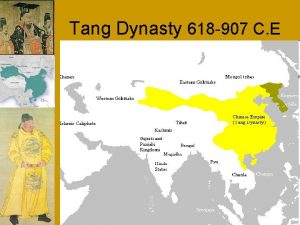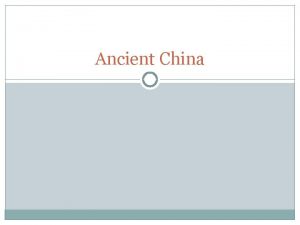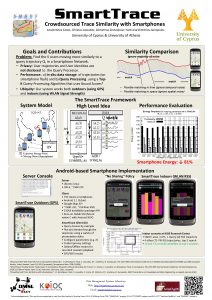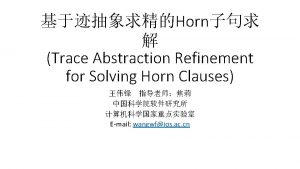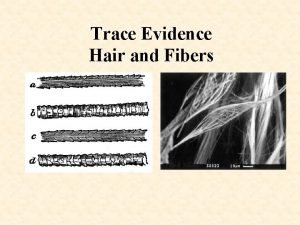Trace Analysis Chunxu Tang The Mystery Machine Endtoend






































- Slides: 38

Trace Analysis Chunxu Tang

The Mystery Machine: End-to-end performance analysis of large-scale Internet services

Introduction • Complexity comes from • Scale • Heterogeneity

Introduction (Cont. ) • End-to-end: • From a user initiates a page load in a client Web browser, • Through server-side processing, network transmission, and Java. Script execution, • To the point client Web browser finishes rendering the page.

Introduction (Cont. ) • Uber. Trace • End-to-end request tracing • Mystery Machine • Analysis framework

Uber. Trace • Unify the individual logging systems at Facebook into a single end-to-end performance tracing tool, dubbed Uber. Trace.

Uber. Trace (Cont. ) • Log messages contain at least: • • • 1. A unique request identifier. 2. The executing computer. 3. A timestamp that uses the local clock of the executing computer. 4. An event name. 5. A task name, where a task is defined to be a distributed thread of control.

The Mystery Machine • Procedure: • • Create a causal model Find the critical path Quantify slack for segments not on the critical path Identify segments that are correlated with performance anomalies.

Causal Relationships Model • Happens-before (->) • Mutual exclusion (˅) • Pipeline (>>)

Algorithms • 1. Generate all possible hypotheses for causal relationships among segments. • The execution interval between two consecutive logged events for the same task. • 2. Iterate through traces and rejects a hypothesis if it finds a counterexample in any trace.

Algorithms (Cont. )

Analysis • Critical path analysis • The critical path is defined to be the set of segments for which a differential increase in segment execution time would result in the same differential increase in end-to-end latency.

Analysis (Cont. )

Analysis (Cont. ) • Slack Analysis • Slack is the amount by which the duration of a segment may increase without increasing the end-to-end latency of the request, assuming that the duration of all other segments remains constant.

Implementation

Results

Results (Cont. )

Results (Cont. )

Towards General-Purpose Resource Management in Shared Cloud Services

Introduction • Challenges of resource management • • • Bottleneck on hardware or software Ambiguous which user is responsible for system load Tenants interfere with internal system tasks Resource requirements vary Unpredictable which machine execute a request and how long • Goals • Effective • Efficient

Resource Management Design Principles • Observation: Multiple request types can contend on unexpected resources. • Principles: Consider all request types and all resources in the system.

Resource Management Design Principles (Cont. ) • Observation: Contention may be caused by only a subset of tenants. • Principle: Distinguish between tenants.

Resource Management Design Principles (Cont. ) • Observation: Foreground requests are only part of the story. • Principle: Treat foreground and background tasks uniformly.

Resource Management Design Principles (Cont. ) • Observation: Resource demands are very hard to predict. • Principle: Estimate resource usage at runtime.

Resource Management Design Principles (Cont. ) • Observation: Requests can be long or lose importance. • Principle: Schedule early, schedule often.

Retro Instrumentation Platform • Tenant abstraction • End-to-End ID Propagation • Automatic Resource Instrumentation using Aspect. J • Aggregation and Reporting • Entry and Throttling Points

Evaluation on HDFS

Intro. Perf: Transparent Context-Sensitive Multi. Layer Performance Inference using System Stack Traces

Introduction • Functionality: • With system stack traces as input, Intro. Perf transparently infers contextsensitive performance data of the software by measuring the continuity of calling context – the continuous period of a function in a stack with the same calling context.

Introduction (Cont. )

Introduction (Cont. ) • Contributions: • Transparent inference of function latency in multiple layers based on stack traces. • Automated localization of internal and external performance bottlenecks via context-sensitive performance analysis across multiple system layers.

Design of Intro. Perf • RQ 1: • Collection of traces using a widely deployed common tracing framework. • RQ 2: • Application performance analysis at the fine-grained function level with calling context information. • RQ 3: • Reasonable coverage of program execution captured by system stack traces for performance debugging.

Architecture

Inference of Function Latencies • Conservative estimation: • Estimates the end of a function with the last event of the context • Aggressive estimation: • Estimates the end with the start event of a distinct context.

Inference of Function Latencies (Cont. )

Context-sensitive analysis of inferred performance • Top-down latency normalization • Performance-annotated calling context ranking

Evaluation

Summary of the papers • http: //joshuatang. github. io/timeline/papers. html
 Song dynasty rulers
Song dynasty rulers Vertical trace and horizontal trace
Vertical trace and horizontal trace Mystery machine uber
Mystery machine uber What mystery pervades a well poem
What mystery pervades a well poem Hình ảnh bộ gõ cơ thể búng tay
Hình ảnh bộ gõ cơ thể búng tay Ng-html
Ng-html Bổ thể
Bổ thể Tỉ lệ cơ thể trẻ em
Tỉ lệ cơ thể trẻ em Chó sói
Chó sói Chụp tư thế worms-breton
Chụp tư thế worms-breton Chúa sống lại
Chúa sống lại Môn thể thao bắt đầu bằng từ chạy
Môn thể thao bắt đầu bằng từ chạy Thế nào là hệ số cao nhất
Thế nào là hệ số cao nhất Các châu lục và đại dương trên thế giới
Các châu lục và đại dương trên thế giới Công thức tính độ biến thiên đông lượng
Công thức tính độ biến thiên đông lượng Trời xanh đây là của chúng ta thể thơ
Trời xanh đây là của chúng ta thể thơ Mật thư anh em như thể tay chân
Mật thư anh em như thể tay chân 101012 bằng
101012 bằng Phản ứng thế ankan
Phản ứng thế ankan Các châu lục và đại dương trên thế giới
Các châu lục và đại dương trên thế giới Thể thơ truyền thống
Thể thơ truyền thống Quá trình desamine hóa có thể tạo ra
Quá trình desamine hóa có thể tạo ra Một số thể thơ truyền thống
Một số thể thơ truyền thống Bàn tay mà dây bẩn
Bàn tay mà dây bẩn Vẽ hình chiếu vuông góc của vật thể sau
Vẽ hình chiếu vuông góc của vật thể sau Biện pháp chống mỏi cơ
Biện pháp chống mỏi cơ đặc điểm cơ thể của người tối cổ
đặc điểm cơ thể của người tối cổ Thế nào là giọng cùng tên
Thế nào là giọng cùng tên Vẽ hình chiếu đứng bằng cạnh của vật thể
Vẽ hình chiếu đứng bằng cạnh của vật thể Vẽ hình chiếu vuông góc của vật thể sau
Vẽ hình chiếu vuông góc của vật thể sau Thẻ vin
Thẻ vin đại từ thay thế
đại từ thay thế điện thế nghỉ
điện thế nghỉ Tư thế ngồi viết
Tư thế ngồi viết Diễn thế sinh thái là
Diễn thế sinh thái là Dạng đột biến một nhiễm là
Dạng đột biến một nhiễm là Các số nguyên tố là gì
Các số nguyên tố là gì Tư thế ngồi viết
Tư thế ngồi viết Lời thề hippocrates
Lời thề hippocrates

